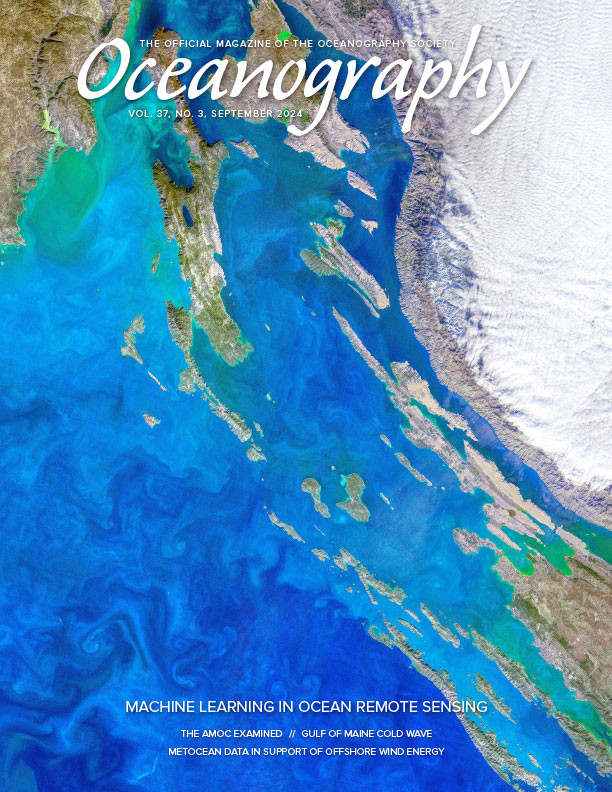Full Text
One of the many joys of being the Oceanography editor is working with the community to deliver a range of article types designed to be of broad interest to readers, from science features, to news items, educational contributions, DIY projects, workshop reports, career profiles, and more. It is this range of article types that sets Oceanography apart from most journals publishing in the ocean sciences sphere.
This September issue of Oceanography is a great example of the variety of content our journal delivers. The issue kicks off with a news item by Record et al. that brings attention to deep-water oceanographic changes in the Gulf of Maine in 2024 and their possible implications. The news is followed by a commentary contributed by Foukal and Chafik who argue for using a density coordinate system to define the Atlantic Meridional Overturning Circulation (AMOC) rather than the depth space definition, and how adopting a common definition of the AMOC in density coordinates will promote progress in the field. Four feature articles covering topics of broad interest to the ocean sciences community follow this commentary: Rahmstorf on whether the AMOC is approaching a tipping point, Bailey and Freedman on metocean aspects of offshore wind energy, Hobday et al. on building stakeholder response capacity to marine heatwaves, and Gray et al. on developing intuition for using machine learning methods “wisely and in a way that benefits the community.”
The feature articles are followed by a workshop report contributed by Savidge et al. on “Western Boundary Current–Subtropical Continental Shelf Interactions.” Next, in a DIY Oceanography article, Marchese et al. demonstrate the practical application of the leaflet R package, which was used on an expedition to improve data sharing and visualization, aiding in selection of sampling stations. An ocean education article by Lockridge and Dorgan describes a half-semester course where students build, calibrate, and test an Arduino-based instrument that measures temperature and depth.
The September issue concludes with our regular columns. Glessmer et al. share tips in The Oceanography Classroom on how to adapt teaching methods to fit purpose and context, encouraging instructors to experiment with it. This month’s JEDI Committee columnists White et al. shine a light on all the personnel behind the scenes who don’t often get recognized for their contributions to oceanographic research, and they challenge the community to find avenues to acknowledge these workers. As Oceanography has done for nearly 15 years, we conclude the issue by sharing two career profiles, one contributed by Scott Loranger (Kongsberg Discovery), and another by Jocelyn Runnebaum (The Nature Conservancy).
So, grab this issue of Oceanography and enjoy reading it from cover to cover. As an open access journal, all the individual articles are available from Oceanography’s web pages (https://tos.org/oceanography/issue/volume-37-issue-3). Readers can instead choose to page through the flipbook version found on our digital kiosk (https://oceanographydigital.tos.org/). Please think about what else you might like to see in the journal and send me—or any of the Oceanography associate editors (https://tos.org/oceanography/editors)—a note. Or submit your own manuscript to Oceanography through our web portal (https://oceanography.scholasticahq.com/). We look forward to hearing from you.
– Ellen S. Kappel, Editor

